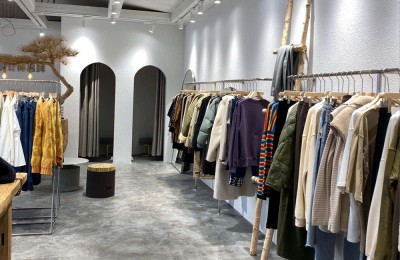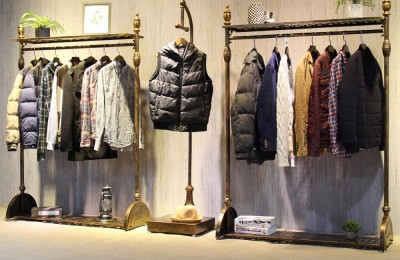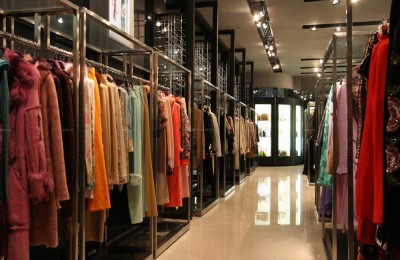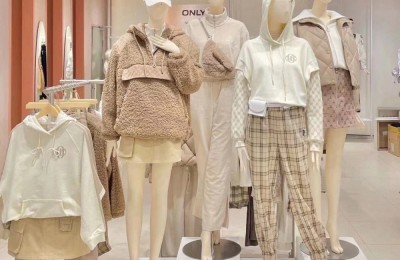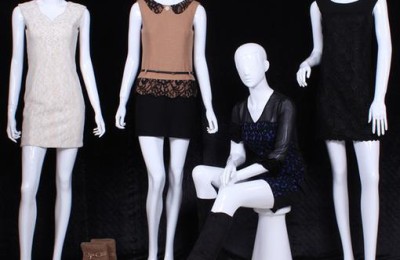How to correctly choose textile printing and dyeing auxiliaries?
1. Technical personnel must master the basic knowledge of additives
This is the prerequisite for choosing the right additives. To make good use of additives, you must have a basic understanding of the basic concepts, basic structure, performance, and usage characteristics of additives. If you find something unusual, you can also analyze the cause and deal with it in time. To this end, I have written an overview section before each chapter in my manual to describe the working principle, basic characteristics, structural classification, usage methods, application testing methods and precautions when using this type of additives, so that readers can basically grasp this type of additives. The knowledge of additives lays a solid foundation for correct use. In the subsequent introduction of each additive, its basic structure, properties (factory standards), uses, and usage methods will be introduced one by one. If the structure type is the same, its usage methods and performance They are also roughly the same, and can be repeated three times. If you know the varieties not collected in the manual, you can understand them very well as long as you know their basic structure. Therefore, when each factory uses a new additive, the supplier must inform the structural category of the additive. For example, the softener applied is an amino silicone oil softener, a hydroxy silicone oil softener, a fatty amide softener, or an imidazoline softener. The application factory should know which type of softener it is, fatty acid paraffin based softener. Only in this way can we grasp its basic performance and prevent blind use.
2. Have a basic understanding of the dissolving properties of additives and their stability to hard water and metal ions
For example, the solubility of anionic surfactants in alkaline is greater than that in acidity, and the opposite is true for cationic surfactants. Amphoteric surfactants have the characteristics of both anions and cations, while nonionic surfactants have less influence. The solubility of the first three surfactants increases when the temperature rises, while the solubility of the non-ionic surfactant decreases as the temperature rises, so a cloud point appears. The cloud point must be higher than the use temperature, otherwise it will be lost. Its efficiency cannot play the role of additives. The cloud point increases with increasing EO number. Increases with the amount of anionic additive incorporated. But it decreases as the electrolyte content increases. If Pingpingjia is used as a leveling agent or dispersing agent for high-temperature and high-pressure coloring, the use temperature will greatly exceed its cloud point (usually around 75°C), which will cause it to fold out in the dye solution. Not only will it not work, but it will condense. Dyes cause color spots. Silicone defoaming agent is an emulsion made of methyl silicone oil or ethyl silicone oil emulsified with non-ionic surfactant and white carbon black. If an emulsifier with a low cloud point is used, the same problems mentioned above will occur, and the additive factory This problem is often not paid attention to, which causes great harm to the printing and dyeing factory. For the prescribed method of cloud point, see our manual 5-013, and for the determination method of surfactant solubility, see 6-035.
3. The acid and alkali resistance of the additive must be measured:
This makes it easy to understand whether the additive can meet the needs of the process. The acid and alkali resistance of additives vary greatly. Anionic surfactants are generally resistant to alkali but not acid. Among them, phosphate esters have good alkali resistance, while carboxylic acids have poor acid resistance. Cationic surfactants are generally acid-resistant but not alkali-resistant. Nonionic surfactants can withstand weak bases and weak acids, but cannot withstand strong acids and alkalis. Printing and dyeing factories must first test whether the additives used will cause turbidity or sedimentation during use according to process requirements. One factory used imported additives for underwater track bleaching. No problem was found at first, and then wrinkles and discoloration continued to appear. Irregular color spots are scattered on the back cloth surface. When I open the box and look at it, I can see that there are solid substances with different thicknesses on the guide roller. It turns out that the additives are not resistant to alkali and are deposited. Color spots are formed when they stick to the cloth and are colored. Therefore, the alkali and acid resistance of additives must be measured. This should be paid more attention to during cold rolling, stacking and bleaching. Many additives will be hydrolyzed in alkaline and acidic media. Please refer to manuals 6-017 and 6-018 for their determination methods.
4. The ionicity of additives must be grasped
There are four types of additives: anionic, cationic, nonionic, and amphoteric. The first three are commonly used. Anions cannot be used in the same bath as cationic additives. When they are together, they will form a flocculent precipitate. Not only will they not work, they will also form For dyeing defects, this ion can be used in the same bath as cationic or anionic additives. Everyone knows these principles, but they are often unconsciously ignored in actual production. For example, color fixing agents are cationic and cannot meet anionic additives. However, many factories clean them after direct, acidic, and reactive dyes are applied. When soaping with anionic soaping agent, but then without washing the lotion, the color-fixing agent is used to fix the color. At this time, the color-fixing agent is completely combined with the lotion on the cloth, which not only wastes the color-fixing agent and reduces its fixation. The color effect is also affected by the precipitates of soaping agent and color-fixing agent that affect the soaping and rubbing fastness of the dye.
5. Do not reduce the dosage of additives at will:
The components of printing and dyeing auxiliaries are roughly divided into two categories, namely functional auxiliariesand surfactant formulations. The former uses different compounds to play a functional role during finishing, such as: oxygen bleach stabilizer, color fixing agent, color correction agent, defoaming agent, softener, green agent, water-repellent and oil-repellent finishing agent, fire retardant agent, Anti-wrinkle finishing agents, etc., can achieve the desired effect only when they are used in a certain amount. The other type is surfactants used as printing and dyeing auxiliaries, such as penetrants, cleaning agents, leveling agents, scouring agents, foaming agents, dispersants, emulsifiers, etc. Their effect is actually to exert the effect of surfactants. The wetting, emulsifying, dispersing, solubilizing and other functions of surfactants are the comprehensive effect of its functions or the specific manifestation of a single effect. Therefore, it is fully consistent with the theory of surfactants, and therefore it is necessary to learn the knowledge of surfactants. Surfactants will form micelles in the solution, and the concentration at which micelles appear is called the critical micelle concentration, or c.m.c. The number of micelles with a concentration exceeding c.m.c increases and the micelles become larger. The wetting effect of surfactant can occur below the c.m.c concentration, and emulsification, solubilization, dispersion, and cleaning are all performed by micelles, so it must It can only be effective if it is c.m.c or above. Generally, the c.m.c value of pure surfactants does not exceed 0.2g/L, and the amount of surfactant actives in most products is only 15-20%. Together with other auxiliary materials, the total solid content is 40%, so the analysis The c.m.c of the finished product probably does not exceed 1g/L. In other words, the concentration of the additive must exceed at least 0.5g/L before micelles begin to be produced. When the concentration is greater than this concentration, the amount of micelles increases and the effect is significant. Therefore, the additives The dosage of detergents cannot be reduced at will, especially the cheap detergents on the market, which have only 5% active ingredients, and a large amount of them are Yuanming powder, etc. If used less, the cleaning effect will not be achieved at all. National and ISO standards This is why the soap dosage is stipulated at 3g/L when doing soaping fastness testing. Wetting and penetration is not played by micelles but by single-molecule surfactants, so it can be below c.m.c., and the concentration in the finishing solution does not need to exceed 1g/L.
6. The additive must be dissolved and diluted before being added to the finishing solution:
Due to the different specific gravity of raw materials and different solubility of compound additives, the composition of the upper and lower layers in the commercial additive solution is often not exactly the same, which affects the effect. After long storage time or in severe cold weather, the solubility changes. The formation of turbidity or even stratification is acceptable as long as it is not an emulsion. However, when weighing the materials before use, the operator must be strictly required to stir evenly before weighing the materials. If it is an emulsion, turbidity and separation are not allowed. layer phenomenon occurs. This means that the emulsion has been demulsified and cannot be used again, or it must be re-emulsified by rapid stirring, and can only be used after it is proved to be usable by high-speed centrifugation. It must not be used by manual stirring.
Solid additives must be dissolved with hot water before use. Liquid additives must be diluted with warm water before use. Additives with high viscosity must be gradually diluted with water while stirring. Additives that are prone to mildew, such as fatty softeners, , As long as the slurry has not become thinned and there are not many mold spots, the upper layer can be skimmed off and the additives below can still be used. If it becomes thinner, return it.
When the dissolved and diluted additive is added to the treatment bath, it must be determined according to the process requirements. Generally, it is added to the treatment liquid before the fabric enters the treatment bath. The solution is circulated to make it uniform before being introduced into the fabric. If it is a leveling agent, Before adding the dye liquor, run the fabric in the leveling agent for a few minutes and then add the dye liquor.
7. To change from passive choice to active choice:
In the eyes of auxiliary factories, printing and dyeing factories are “gods”. There are thousands of auxiliary factories in China today. In order to compete for the market, auxiliary factories use various means to deliver samples door-to-door and find ways to connect, resulting in printing and dyeing factories facing south. There are too many samples and there is no time to make them. The negative effect is that you develop a habit of looking at the sky from a well and not seeking to explore. You are used to choosing additives from the ones that come to your door. Little do you know that the world is big and good additives emerge in endlessly, which provides a great contribution to improving product quality. Therefore, printing and dyeing factories should change this situation and become global leaders, seeking affordable and high-quality additives for their own use. In today’s increasingly informatized world, it is easy to find the samples they need. . The manual provides 4,000 auxiliary varieties that were developed and produced in 2000 for selection.
AAAFYYTRUYJY76I
Disclaimer:
Disclaimer: Some of the texts, pictures, audios, and videos of some articles published on this site are from the Internet and do not represent the views of this site. The copyrights belong to the original authors. If you find that the information reproduced on this website infringes upon your rights, please contact us and we will change or delete it as soon as possible.
AA



